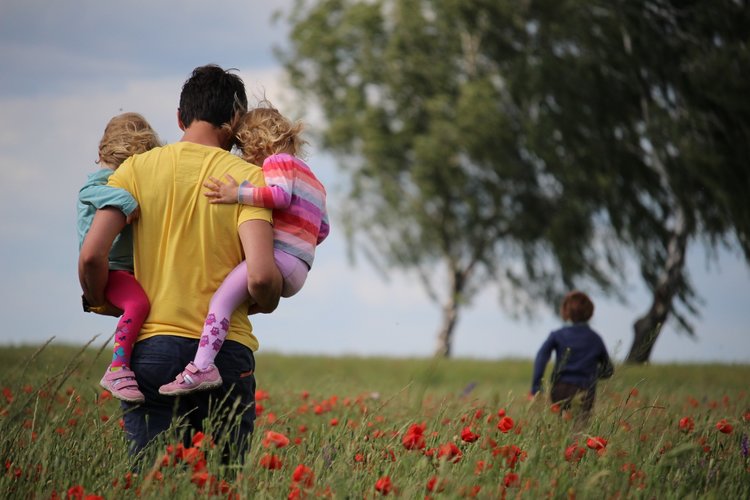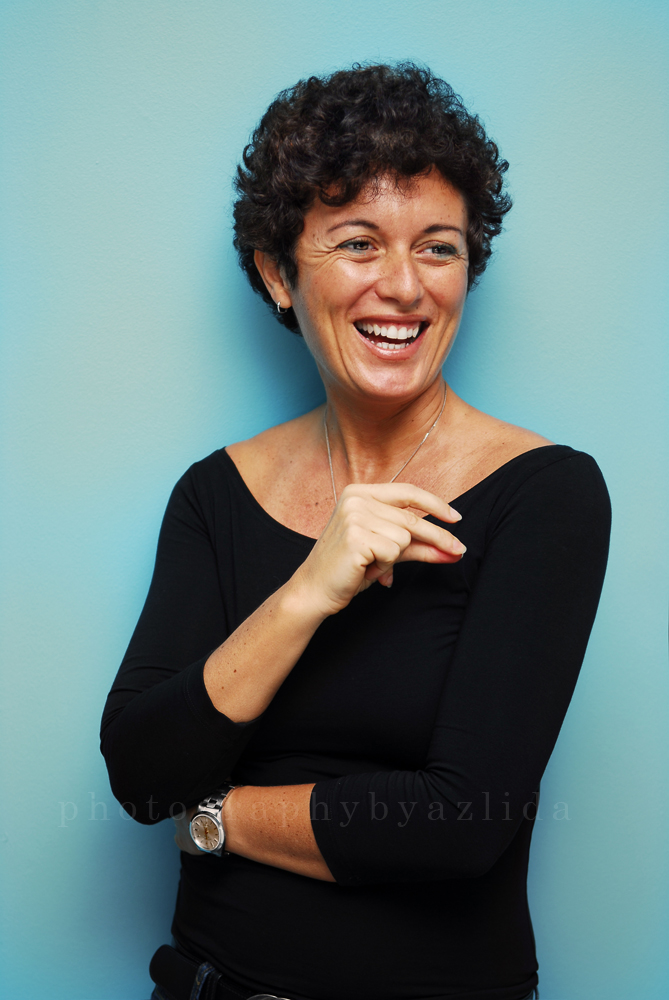I recently attended a group gathering called ‘Circle of Men’ in Barcelona. It’s linked to a non-profit organisation, ManKind Project, that I got to know several years ago in Singapore, and which I introduced my male clients to when I was working as a couple counselor and relationship coach.
One of the more senior men within the group, originally from Mexico, opened the circle by sharing the reason why the ManKind Project came to be back in the 80’s. Women were very interested in and prone to engaging in self-growth, development and empowerment work, whilst men were still so far from the notion of considering getting to know their inner selves.
In truth, this reality from the 80’s, very much still exists today. I’ve coached clients around the world in countries including Spain, the UK and Singapore and it’s safe to say that around 75% of my clients have been and are women. Over the years that I trained to be a teacher at the Hoffman Institute in Milan, there was often a greater ratio of women than men in each 8-day retreat. I noticed the same disparity in Spain, whilst studying for my postgrad in Gestalt and Movement over the last couple of years, as well as in the UK, during a Facilitation for Creative Collaboration training. To date, the only self-development retreat, certification or course I’ve partaken where women didn’t outnumber men was at the Path of Love retreat in Wales, which I recently went to. Men and women were split pretty 50-50 and not only among participants but also staff and facilitators.
In truth, we women have been given the space to work on ourselves for years. We’ve been open to learning about ourselves and are not judged for doing so, being the more ‘emotionally connected’ gender, as stereotypes would have it. Because of this, there have been female self-empowerment groups nationally and globally for many years.
Men have not had this kind of open invite to connect within themselves and with others on a deeper level for very long. They have only more recently started to seek inward and do the same.
Though this is truly excellent progress, what I can’t help but notice is more growing opportunities to separate men and women. Men and women are after all, always seen in a separate light – no less because of the surmounting research on our different needs, and as John Gray revealed in his popular TedTalk, different brains.
Whilst observing all this, I found myself asking what my favourite audience demographic would be to deliver workshops, holiday retreats and talks to. And the answer has been the same since I began my journey: I would love to see men and women together and working together.
The male-female relationship has always been a deep interest of mine alongside that of personal transformation. In a sense I feel I am called to dive into and work alongside this male-female dynamic, perhaps because of my own history and experiences with male-female relationships in my family, marriage and relationships. Through all these very real and sometimes very painful experiences, I have built such a full body of rich knowledge and awareness around this ‘mysterious’ dynamic that I feel it would be a shame not to share it with others.
This series of articles are addressed to both men and women and aim to explore how we can grow and expand together, and how we can do so by getting to know each other.
Introducing the Two Types of Relationships
I will start by clarifying something which I consider to be the foundation when it comes to exploring the male-female relationship.
I fully agree with R. Liebermeister, psychologist and specialist in Family Constellations, and author of The Roots of Love, that there are two basic types of relationships we encounter in our life span:
- The one between a superior and an inferior, such as a relationship that exists between parents or guardians and children.
- The one between two people who are equals, such as an adult man and a woman who unite to become husband and wife or simply agree to live together. Or a brother and sister which may live their life independently and share what is known as ‘brotherly love’.

It’s important that I clarify the characteristics of a relationship between equals, define how it is fundamentally different from the one between parent and child, and how it can be strongly affected by the dynamics and entanglements of earlier parent-child relationships.
A Relationship between Equals
Upon observing a mature adult relationship within a couple, and between parent and child, one starts to notice the major differences beyond the obvious. In an adult couple, balance and reciprocation should be a given. A movement of giving and receiving is the foundation of a truly mature adult relationship.
A man would receive from the woman what he is missing whilst reciprocating by giving the woman what she is missing in return. As opposite energies (the feminine and masculine), what is often said is that the more strongly the man is rooted in his male energy, and the woman in her female energy, the stronger and more intense this balanced exchange is and therefore, the relationship is.
What may often be overlooked is that an adult relationship requires this equal exchange. Giving and receiving must occur in all areas like material, emotional, sexual, intellectual and possibly even spiritual too. This balance is how we gauge what truly is a mature and balanced adult relationship.
In a mature relationship, both partners need to be ready to let the other know when they need something which the other can give and more importantly, that they are ready to receive.
This balanced and reciprocal exchange should be the supporting force that maintains the stability in a relationship and allows the commitment from each partner to deepen over time. The more a man and a woman get from each other, the stronger the bond will be between them and the likelihood of a successful and long relationship.
Love Between Equals
As it is said in the book, The Roots in Love, “The natural practice of all animals is to look for a mate. Human beings are no exception”.
What brings us and keeps us, as men and women, together, is physical attraction; the male-female polarity; the primal force that starts the ball rolling. When looking at the sexual dimension, we can see men and women as positive and negative poles of a magnet, drawn to each other often by an attraction that usually operates beyond our control.
In the so-called ‘honeymoon’ or ‘courting’ stage of the relationship, the man and woman want to be close. Our urge is to find total union with the other and in order to do so we find ourselves quickly dissolving our differences. We turn a blind eye. We often lose ourselves in what is known as ‘lust’ or ‘erotic love’, confusing sexual intimacy with authentic love.
Eric Fromm talks a lot about this ‘erotic love’ stage which grows out of a need to completely ‘fuse’ with the other. I agree with him when he says, “It is the most deceiving form of love we humans may encounter” (The Art of Loving). Why? Because the experience of sudden intimacy is by nature temporary. As Dr. Stuart Scott, who wrote The Exemplary Husband said, “Liking the way somebody looks or being physically attracted to somebody’s body does not mean you love them. These things can be a result of pure selfishness… Many believe that love is synonymous with the sex act. Like physical attraction, the sex act can be nothing more than selfish lust.”
The reality is that sexual desire may be easily stimulated by other emotions or needs such as anxiety, solitude, a desire to conquer or be conquered, to feel in power or as a means of avoidance. Many of us are not aware that sexual attraction can be easily confused with the real root emotions, imbalances or compulsions which stimulate it. Today, we often associate the pull of sexual desire with the pull or need for love and affection. This makes us extra susceptible to falling into the trap of believing that we are in love with someone when other factors are at play such as a strong physical chemistry or the fear of the alternative: solitude.

To become authentic love, the early stages of romance require a fundamental condition beyond that strong sexual attraction: choice. To transform ‘erotic love’ or lust into a mature, authentic love, we’re required to choose to love from the centre of our being (be it the essence, spiritual self or soul, whatever resonates most with you). We must decide to see, sense, feel and connect with the other person through their own essence in a conscious and mindful movement. In that space, as Eric Fromm explains, we are all the same. And from this principle therefore, it doesn’t matter who we love because love should be a conscious commitment, an honest choice and a mindful action. I’d also add that authentic love begins as a desire and perseveres because of choice.
Is There a Perfect Match?
Men and women alike bring whatever unsolved burdens and issues we inherited from our families into the relationship. So, you can imagine how great an impact the parent-child relationships we experienced growing up have on the mature relationships we go on to have as adults.
As Eric Fromm said, the basic condition for neurotic love lies in the fact that one or both of the ‘lovers’ have remained attached to the figure of a parent and transfer the feelings, expectations and fears they once felt towards their father or mother, to their partner. “The person involved has never emerged from a pattern of infantile relatedness and seeks for this pattern in their effective demands in adult life. In these cases, the person has remained, effectively, a child of two, or of five or of twelve, while intellectually and socially he is on the level of his chronological age. In the more severe cases, this emotional immaturity leads to disturbances in his social effectiveness; in the less severe ones, the conflict is limited to the sphere of intimate personal relationships”
If someone wants to compulsively ‘give love’ to their parents, they may subconsciously compensate by expecting and receiving from their partner, in a way reflecting on that partner a relationship or dynamic that they experienced in childhood. The consequence of this is of course, very weak foundations. This is when things can get muddled up in a couple and major incompatibilities begin to show that wouldn’t have surfaced during the ‘honeymoon’ stage of the relationship.
When one partner in a relationship, often subconsciously, assumes the ‘parent’ role in a couple, the balance between two equals is quickly thrown off.
In a mature and balanced couple, each partner has to ‘ask’ and know how to receive from the other and both individuals are aware of what they owe to the other. I strongly believe through experience, that it is crucial that both partners give only as much as the other is prepared to give back and receive only as much as the other is ready or able to embrace in return.
I remember giving so much in my marriage that one day my ex-husband looked at me and said, “You’ve taken away all my dignity!”. Of course, that was the way he viewed it, omitting taking the responsibility for his own role in the relationship. It takes two to tango after all, and everyone in a relationship has their responsibility.
I’ve seen this giving and receiving imbalance through so many of my clients’ stories and relationships around the world. Usually imbalances happen without either partner being aware of the dynamics
This relationship dynamic requires deep understanding because usually imbalances happen without either partners being aware of what could be occurring: the compulsive taking or receiving are the expression of behavioral patterns rooted in early family conditioning. One partner may eventually pull out of the relationship because the imbalances have become unbearable. The real issue is when one partner is putting more into the relationship than the other, demanding or expecting too much or asking for too little in return.
In a couple, it is healthy to ask. Problems will begin to arise if/when one partner is not ready to share his/her needs or is unable to ask or receive from the other. Likewise, when one partner is not able, willing or has a desire to give. Troubles may also arise when/if one of the partners begins or persists acting like a parent or like a child. Usually if these dynamics are allowed to play out for sometime, it can lead to painful consequences in a relationship.
If our goal is to maintain the balance within a couple, we have to remember that we are only the child to our parents, and only the parents to our child. In our partnerships, we are equal adults. How do we identify if there is a role imbalance? Well, if we’re made to feel ‘small’ in our relationship or if we have a tendency to treat our partners like a child, then there is a clear imbalance forming, more often then not due to unresolved issues with our own families and/or previous partners. It’s important to note that the imbalance can begin from one of the two partners or both simultaneously.

It frequently transpires that the unresolved issues from both partners’ lives begin to function harmoniously within the couple – like a puzzle piece that finds its match. Often in these cases, both act out roles that fulfill and match each other’s needs perfectly. Though this might appear to be a ‘lucky strike’, these are the occasions in which a ‘dysfunction’ or imbalance are hardest to identify. For example, a man who subconsciously longs for a mother may attract women who subconsciously long to be needed; a controlling partner will attract someone who feels the subconscious need to be controlled; a narcissist (sadist) needs an empath (masochist); someone who doesn’t respect their partner might find someone who doesn’t believe that they deserve respect. If such individuals find each other, they will create the perfect ‘match’. The emotional immaturity of one of the two or both partners, and the consequent disequilibrium formed below the surface may become the fundamental element keep the couple together.
It’s often in these dysfunctional relationships where one individual begins to exercise control or manipulate the other. We see this when a woman becomes involved in an emotional co-dependency with an ambivalent man, who manipulates and controls her by minimizing or rejecting her. This is one example, where the both partners are emotionally immature, playing out the victim and persecutor, both needed the other in order to compensate for their own deep insecurities. The Phantom Thread, a 2018 Oscar winning movie sheds some light on this particular dynamic powerfully.
Couple Crisis’ and Cycles of Life
Psychological growth and emotional maturing are never linear, they do not follow a fixed timeline for every individual.We can be successful in our careers as adults for example, but remain fundamentally immature when it comes to other aspects of our lives such as emotional intimacy and relationships. Sometimes, two partners can begin a relationship in the same place and move at the same pace for some time until a particular life choice or obstacle appears. When this occurs, one partner might be instigated to grow and move at a quicker pace, whilst the other doesn’t have the same reaction. This is when a couple can find themselves in a misalignment about the vision each partner has in their heart for their lives and relationship. It can act like an earthquake, moving the ‘tectonic’ foundations of a relationship to the point where change, communication and transition must be facilitated by a counselor or psychologist. We are fooled into thinking these crisis’ always result in the break down in a relationship when in reality they can prove to be powerful triggers for both partners to evolve together if they are both willing to face them together with commitment, responsibility and love.
Self-Reflections
I believe and I’m okay with admitting and sharing that my ex-husband and I experienced one of the above mentioned dynamics which form a toxic relationship for many years. And for many of those years it was the ‘perfect match’. We were the typical couple where a partner would judge the other for the characteristics or behaviors that they had lost themselves in childhood. We saw love acted out in negative ways in our families of origin and it is all we knew for many years. We were repeating the toxic cycle we’d inherited from our childhood and couldn’t ‘get out’ because the emotional entanglement was too deep and strong. Despite all our knowledge and training as therapists, we were unable to break through our own conditioning for the survival of the relationship and for our daughter.
I also believe that my ex-husband and I were both alternating between masochist and sadist in our relationship, and this is what made us the ‘perfect match’ for so long. If I hadn’t chosen to start my journey to find my ‘groove’ and understand myself inside out, the relationship would have probably had a stronger chance of continuing like it did between both our parents’. We may have still been together, blaming each other for our unhappiness or we the relationship may have eventually ended with little awareness as to what caused the breakdown, as with many couples in the world. We would have then probably kept attracting similar partners that we’d would create similar toxic cycles with, never quite pinning down the issue or breaking free.
The Importance of Self-Awareness
It was a huge shift in awareness that caused the change, leading us to eventually take different paths. At first, this seemed negative, and it would do to anyone else going through this. Perhaps thoughts creep in such as, maybe I should forget about searching for my ‘groove’, maybe transforming myself from the inside out is a terrible idea, maybe I should stay where I am most comfortable, conforming to what is ‘normal’ today. Heads up, ‘comfort’ in these occasions, usually means ‘dysfunction’. These thoughts are activated as a resistance to change, and when we are so used to and comfortable in our dysfunction, you know it won’t be an easy battle.
But it is a worthwhile one… finding out who we truly are, looking for our own groove (our personal freedom, our higher purpose).
During my spiritual journey I came to discover that The Universe asks us to transform, not to conform. We can choose to live in ‘limbo’ not knowing or becoming aware and there’s absolutely nothing wrong with that or we can choose to take the road less traveled. What’s important to remember is that we all have a choice.
As part of my contribution to society, I choose to share how I changed my life by looking for my groove and finally finding it. It was a victory for the light in me over the shadow, a victory that gave me the ability to wake up and look at like with a smile, despite the human pain or fear that still exist in my heart and need processing every now and again. A victory that brought me closer to experiencing God and his mysterious ways of working in our lives. A victory that led me to let go of my compulsive, misunderstood anger, unhealthy masks, cynical attitude and judgement, It was a victory that allowed me to blossom into a fully human, fully alive and also… fully ordinary woman able to take authentic responsibility and slowly begin to live life in a deep calm, flow of love within… An ordinary woman today, living an extraordinary life!
header image by Thorpe Mayes
Elisabetta Franzoso’s, ‘Stella’s Mum Gets Her Groove Back‘ is now available on Amazon Kindle.


